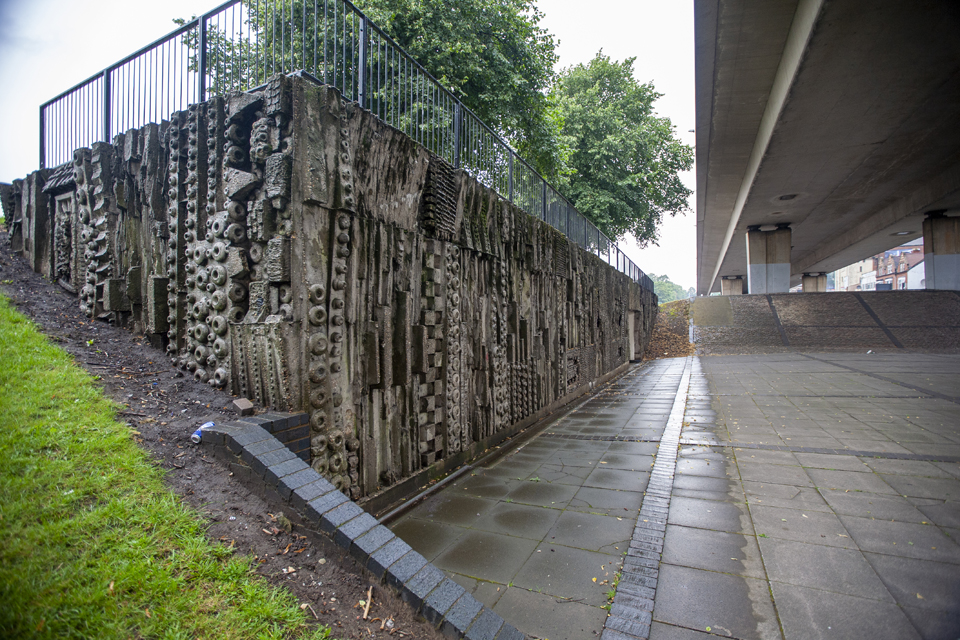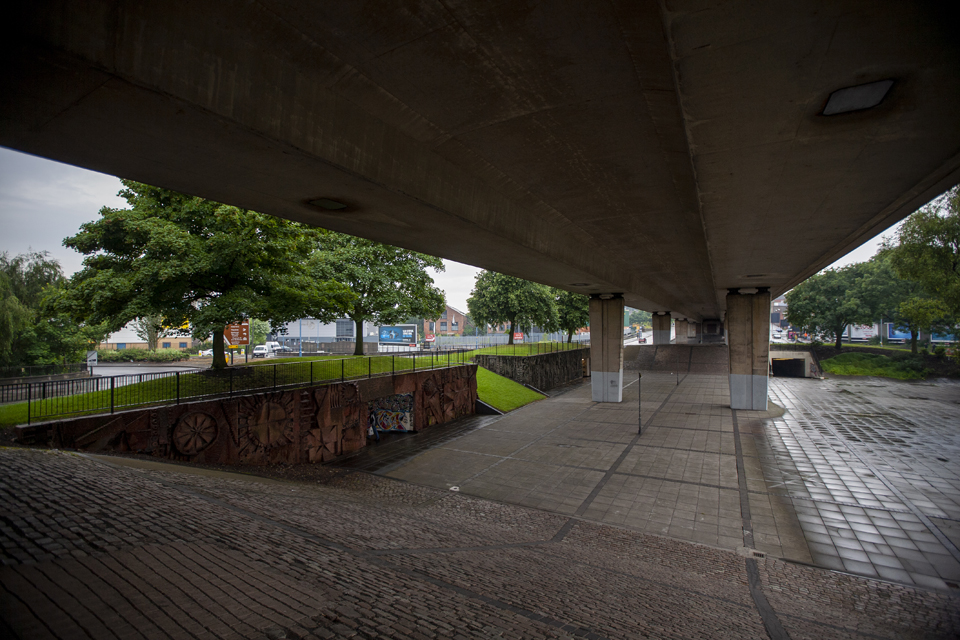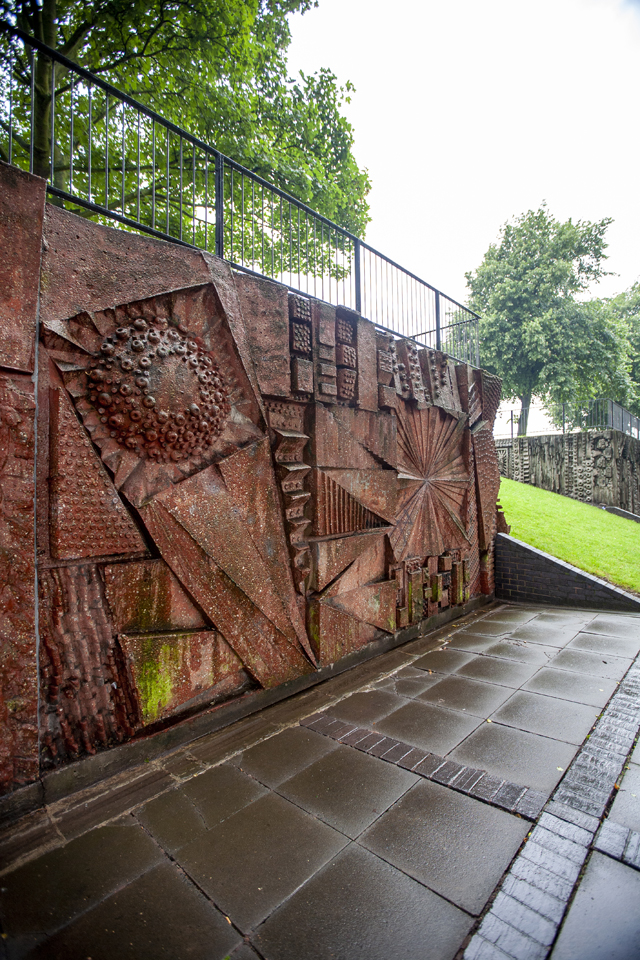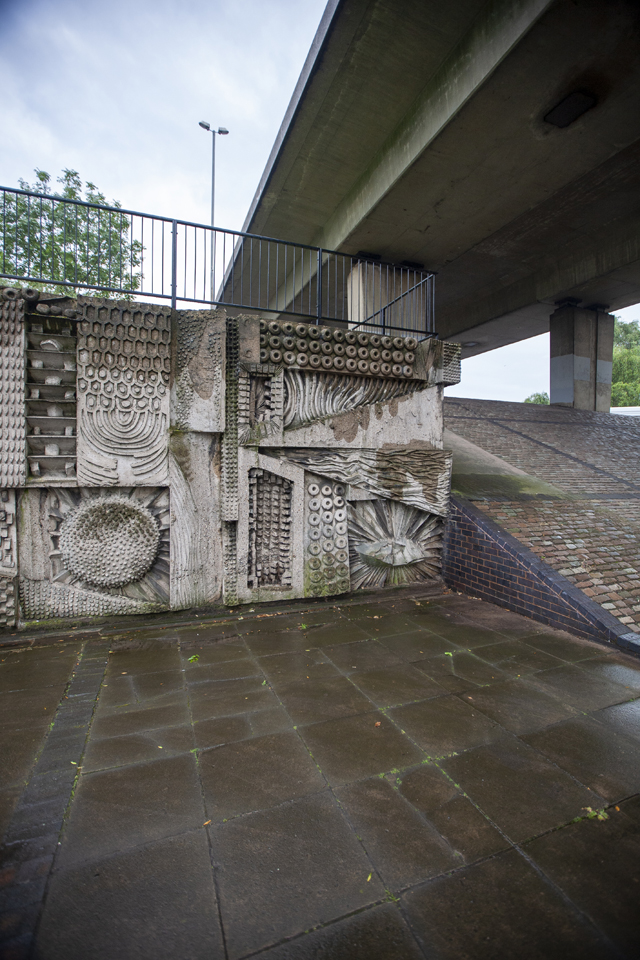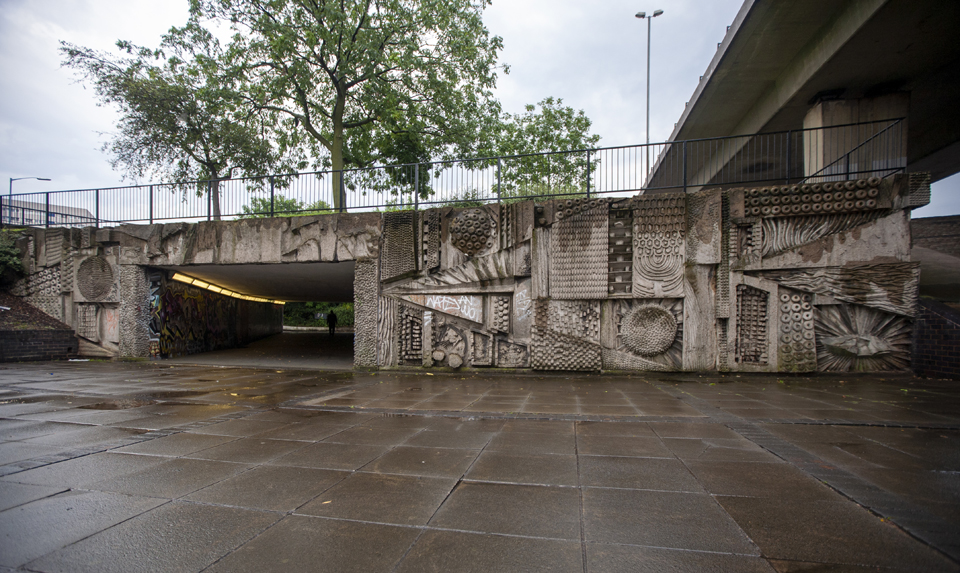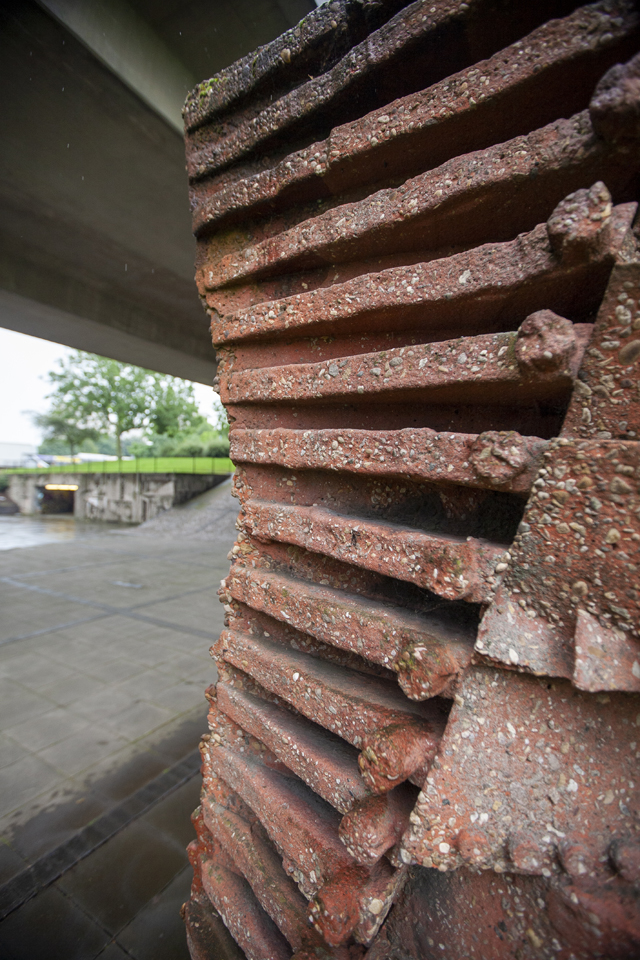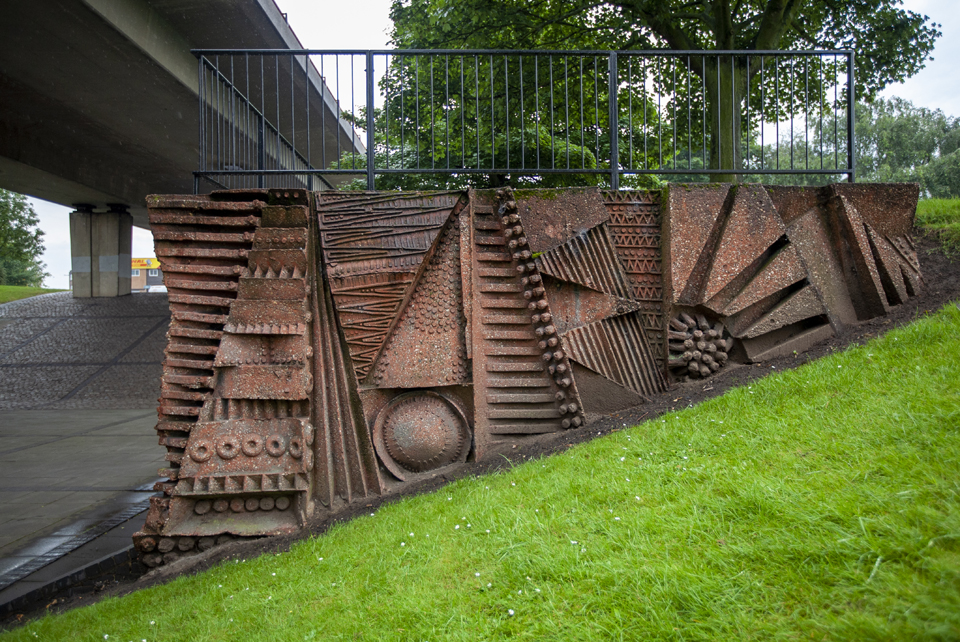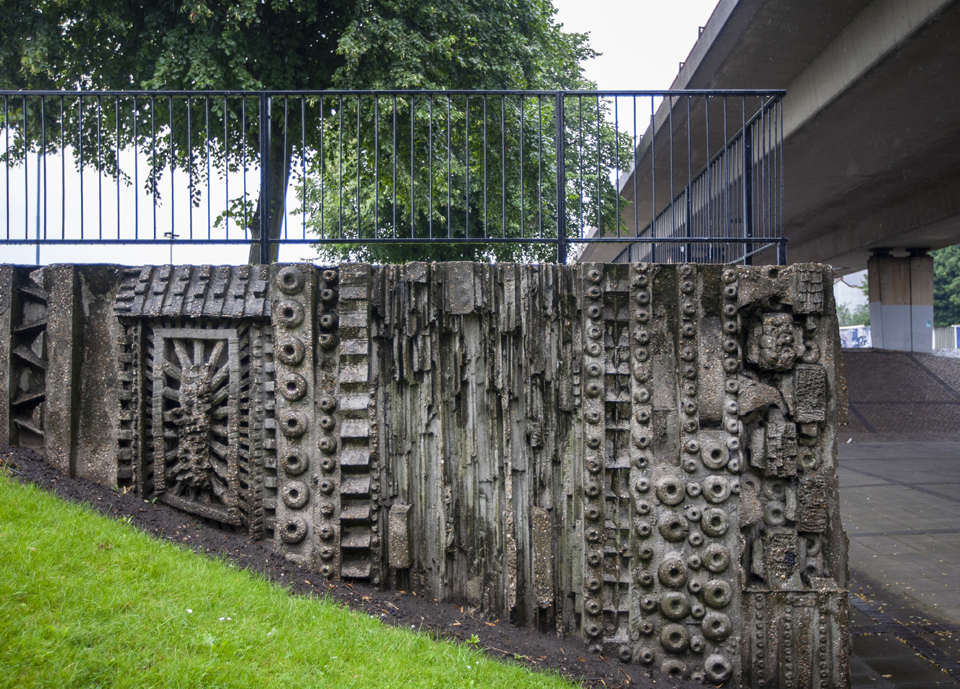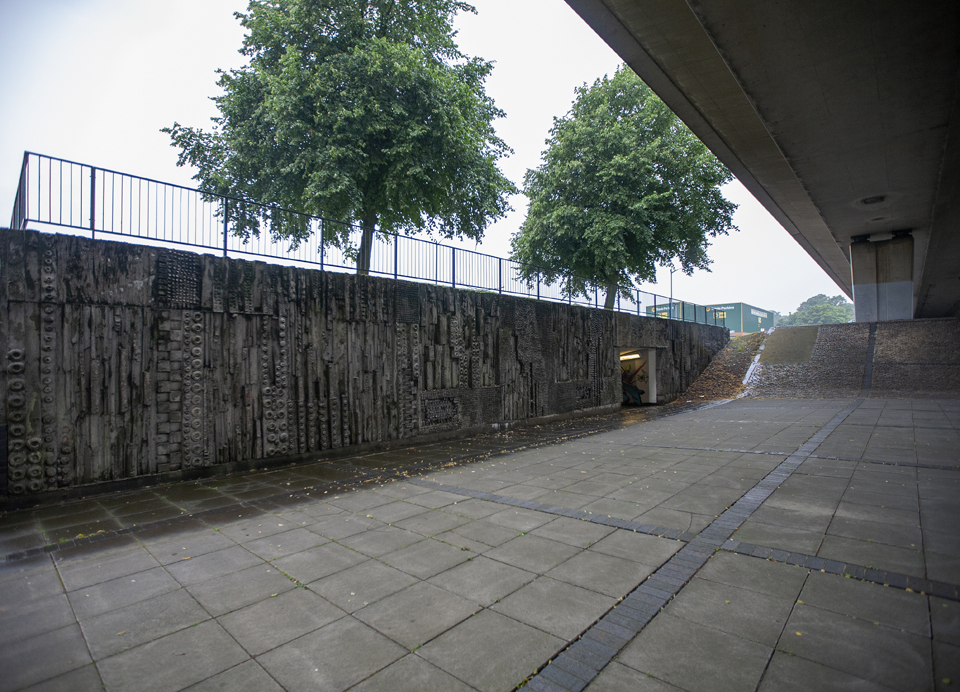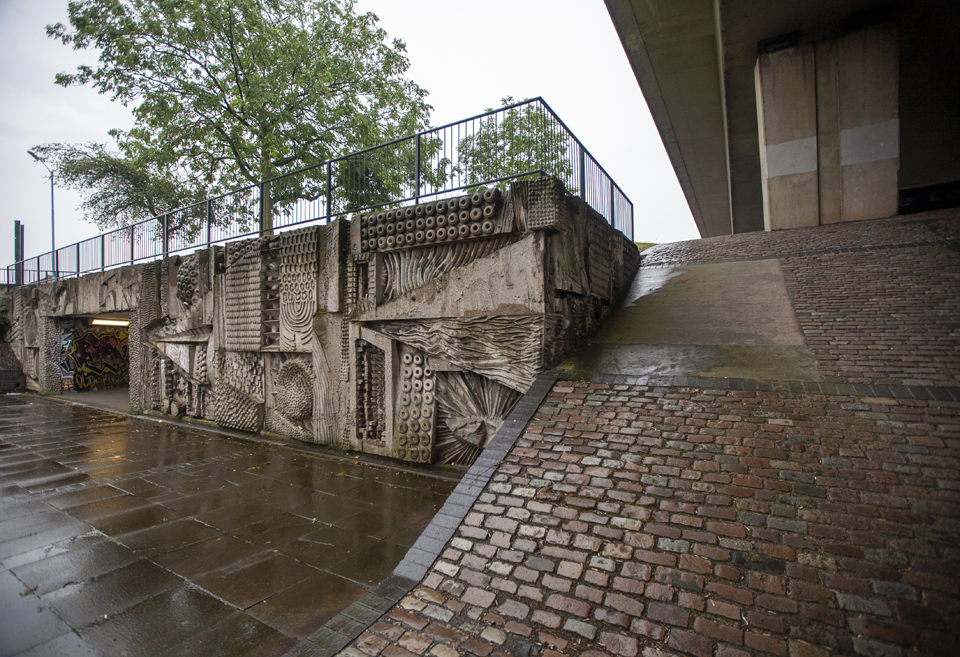Hockley Flyover
1968
William (Bill) Mitchell was known for his large-scale works, Hockley is the biggest of these in the UK. It has taken time for his work to be appreciated as he was denigrated by his contemporary artistic community due to the explicitly commercial nature of his work. I recall chatting with him after his lecture at Somerset House, where his work was included in the 2016 exhibition, Out There: Our Post-War Public Art. He remarked that he was finally alongside ‘Henry’ (Moore) and ‘Barbara’ (Hepworth), it was evident that this recognition late in life was meaningful for him. The robustness of his material forms was entirely fitting for this infrastructural setting and the total work is something to behold in its predominantly intact state. He was happy for the works to be used as was fit and gleefully proud of pictures of local youths using it as a climbing wall, seeing this as its successful integration into the life of the community. The sculptural walls were formed by pouring concrete into polyurethane moulds and, once cast, were treated with bush hammers and sand blasted, techniques Mitchell pioneered and used widely. The patterns and motifs poured from Mitchell’s hyperactive mind. Watching film of him at work it is clear to see the instinctive nature of his creation, he did not overthink his production. Perhaps this also let him down in terms of contemporary critical appraisals, he was matter of fact in describing his approach and as interested in the craft as much as the content. Nonetheless, his legacy is assured as this was the latest in a succession of his works to be listed by Historic England. [1]
[1] https://historicengland.org.uk/listing/the-list/list-entry/1480347
